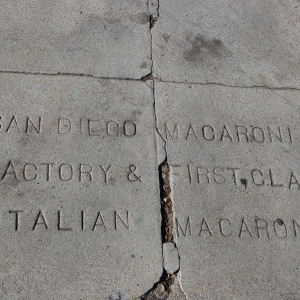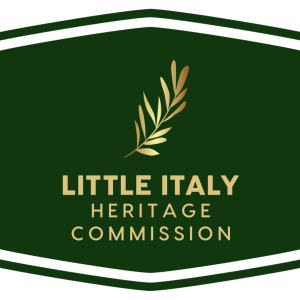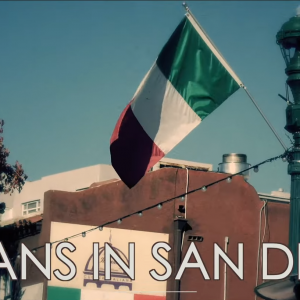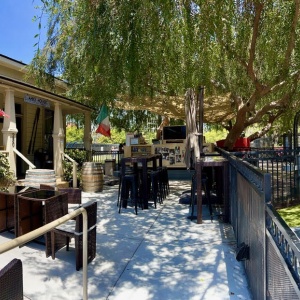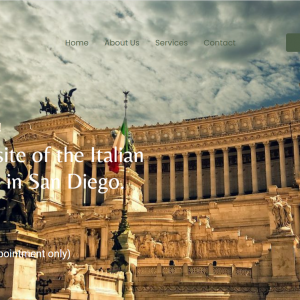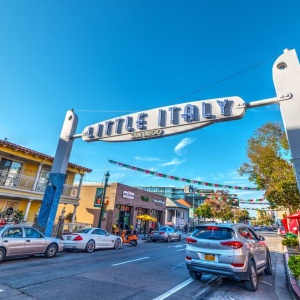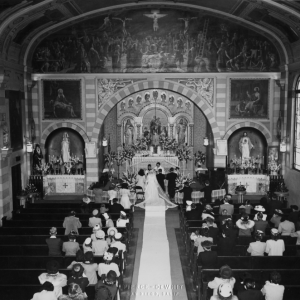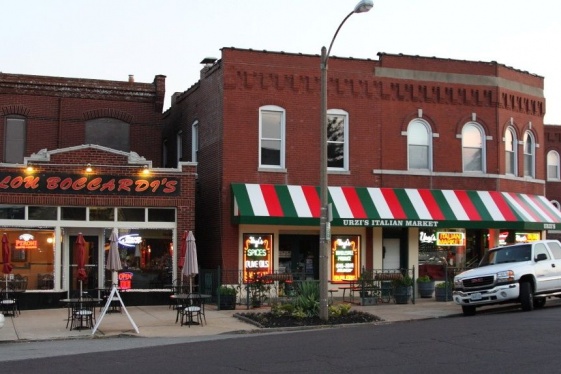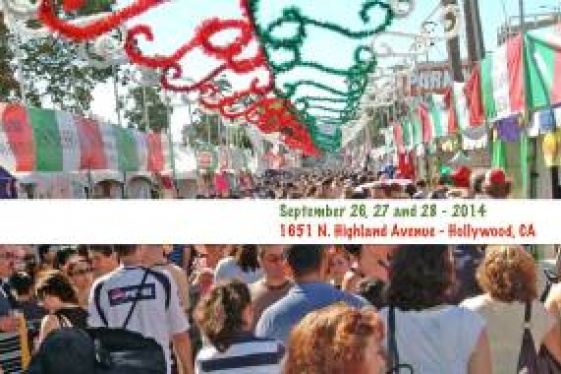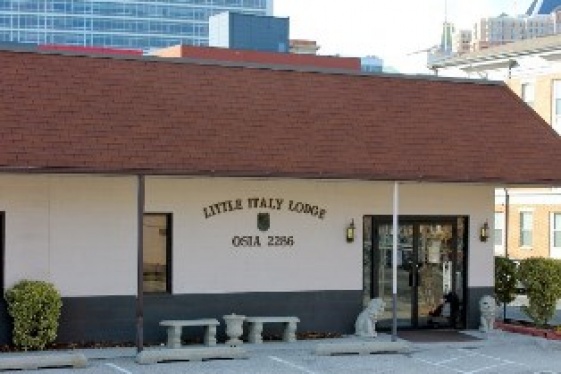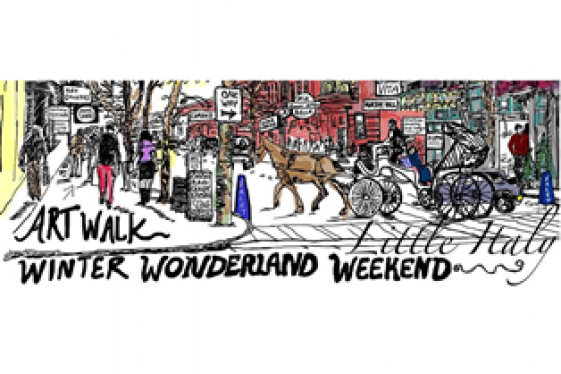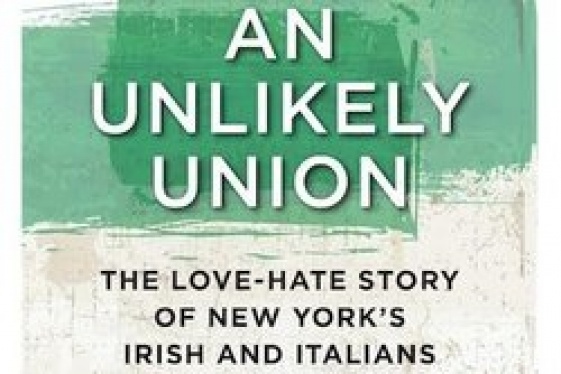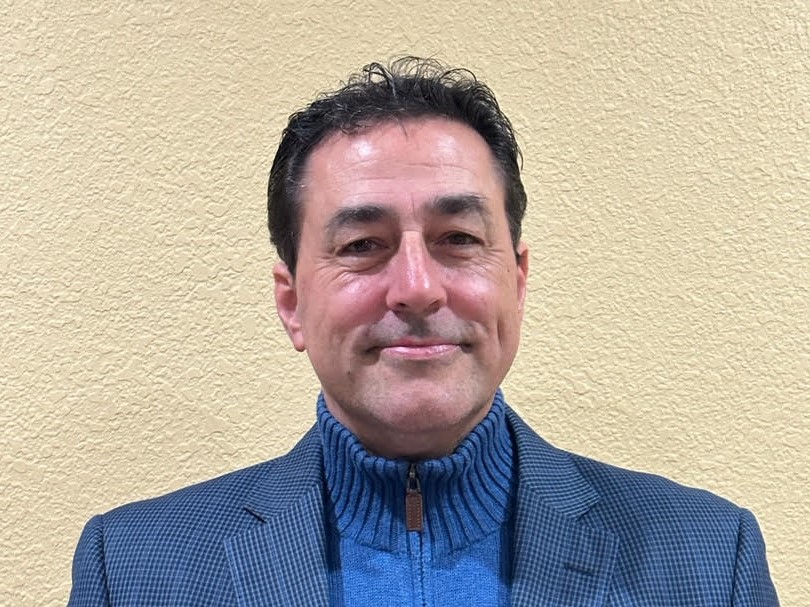
Tom Cesarini (Italian Honorary Consul in San Diego, CA)
Andiamo nell'Italia di San Diego, insieme a Tom Cesarini

We resume our trip to the United States: today we are in San Diego, in the southern part of California. One of the most important Italian American personalities in the city is Tom Cesarini.
Tom perfectly embodies the Italian American spirit proud of Italian roots, and the commitment to celebrating these roots and our country. We thank him for joining us on We the Italians and for what he does to represent us in San Diego.
Tom, please tell us something about you. Which part of Italy does your family come from, and how did they arrive in the US?
Umberto, thank you for this opportunity with We the Italians. It is a pleasure to participate and to be a part of the great work you are doing with your promotion of Italian culture on a global scale.
My family hails from Aspra - a picturesque town by the sea, near Palermo, Sicily. My parents grew up together in their town, and 60 years ago after marrying they settled in San Diego as did my maternal grandparents and their other children. My father’s family, however, remained in Sicily.
My father is a barber by trade; by age 12 he was already working in a salon in Sicily. In San Diego, he worked as a barber at the Marine Corps Recruit Depot (MCRD) for 47 years until his retirement. His passions have included il calcio, of course, as well as art, film, music, and poetry—crafting many lines of exquisite poetry and prose himself. My mother labored at myriad jobs to help support the family. Upon arrival in San Diego, she began working at the San Diego Macaroni Factory (which was located in our Little Italy neighborhood), and she also took English and French courses. Several years ago, she published her personal essay (in Italian) on her experiences in America.
I am most grateful for my parents’ and grandparents’ stories, lessons, and experiences as immigrants. I credit their emphasis on cultural-heritage preservation as the impetus for my own passion and commitment to San Diego’s Italian community. Furthermore, I value their sense of tradition yet progressive open-mindedness, their unwavering integrity, and their steadfast support—which have helped to shape me immensely. And thankfully, my parents taught me the Sicilian and Italian languages. (I began grade school knowing hardly any English.) They instilled in me a great love, admiration, and respect for all things Italian - elements which have accompanied me through all the opportunities and challenges of operating a nonprofit Italian cultural organization.
Your organization is “Convivio.” We want to know everything about it!
I decided to establish Convivio in 2003 after having spent a number of years volunteering for other local cultural groups—and having noted a lack of unity with our community organizations. The very word Convivio means to come together, to unite—and that elemental essence of unity and collaboration serves as our organizational zeitgeist. I wanted to tap into the aspirations and ambitions of San Diego’s Italian community, work on coming together to address those components, and then strive toward creating a dialogue with other like-minded individuals and groups in order to function more effectively within a more unified system. Thus, Convivio is a collaborative group and a learning organization, continually evolving and striving to improve.
Through our mission of advancing Italianità in its many forms, Convivio provides a multitude of programs: music events, film screenings, artisan exhibitions, classes and workshops, cultural-heritage exhibits, and lectures and presentations, as some examples.
Convivio’s overall vision has been to establish a large-scale, multifaceted cultural and heritage center to serve as a community hub and resource for San Diego. The cultural center represents a unifying element for the local Italian community. By serving as a catalyst for collaboration of the numerous Italian community groups all working independently for a similar cause, the center would help these organizations to increase their collective impact—a place in which to find common ground and a primary cultural locus for the Italian community.
In 2012, we finally achieved this goal, opening the center and museum in San Diego’s Little Italy with vital support from local community members. Unfortunately, this project proved to be short lived, as a developer purchased the building in which we were located and we (along with all the other tenants) had to vacate. We have never relented in our pursuit of this worthwhile project, however, and today—through the largesse of a prominent local family—we have received a generous donation of property to reestablish the center. We are currently working on its development with an even larger scope and objective. This property contribution is foundational for Little Italy’s next step in its evolution: The new center will serve as a vehicle to preserve, honor, and perpetuate the Italian cultural-heritage assets and narrative that shaped this community, and the establishment will also attract visitors eager to learn about the history and evolution of our Italian enclave.
What is the project called “Italian Digital History Initiative”?
A large focus of our organization is storytelling—especially in recounting the Italian historical narrative of this community and preserving its rich heritage assets through photographs, documents, and oral histories. Convivio has established the Italian Digital History Initiative specifically for this purpose.
As a result, we now have a digital repository of the community’s history through images collected from community members. We are also working on a project I have wanted to bring to fruition for many years—a docuseries in five parts to capture and convey the collective story of the Italians of San Diego. We have developed a short trailer that highlights this noteworthy project: www.givebutter.com/littleitaly.
We have also established the Little Italy Heritage Commission, an advisory committee comprising local community members and leaders. The purpose of the committee is to provide guidance and expertise for our work through our digital-history initiative and through the development of our new center.
Please tell us something about Amici House...
Amici House is a cottage built in 1888, first owned by the Giacalone family, a prominent fishing family in San Diego. Convivio began operations in this location in 2017. Amici House is our community’s current place that serves as our cultural center and heritage museum while we develop our new property.
The cottage is located in the heart of Little Italy next to Our Lady of the Rosary Parish and Washington Elementary School. Both the parish and school have been fundamental for the community members in the neighborhood, especially during the neighborhood’s peak after WWII and into the 1960s when many Italian families still inhabited the area.
Yet even today, with a larger and more diverse community, the parish and school remain important institutions. Amici House provides a nice complement for these two anchors by accentuating further the important cultural elements that have made this community what it is today. At Amici House, we provide music programs, conversation classes, presentations, and other cultural fare for Italophiles. We even have a bar on the patio—“bar” in the Italian sense, not the American one. (So therefore we serve il caffè.)
You also are the Italian Honorary Consul in San Diego. What are the issues for which you give assistance to our compatriots in your area?
I was appointed the Italian honorary consul of San Diego in the fall of 2019. It is an honor and privilege to serve in this role as a representative of the Italian government, a position which has complemented my work in the Italian arts and culture space. Locally, our office assists Italian co-nationals with passport renewals and helps students in obtaining their study-abroad visas, verifying their identities to expedite the process.
Having a local consulate office has proven to be a tremendous boon for our compatriots, as now they do not need to travel to Los Angeles (where our primary consulate is located) for several vital services. We also provide resources helping people navigate the consular system for services such as citizenship, fiscal codes, and powers of attorney, among others. And we also assist co-nationals in the event of emergencies or crises. I look forward to further collaboration with the consulate general of Los Angeles and opportunities through the consular network to increase awareness of the important contributions of San Diego’s Italian community and its members’ individual and collective needs.
San Diego has an amazing Little Italy…what’s the secret behind this?
San Diego’s Little Italy experienced a resurgence in the mid 1990s after decades of decline. The construction of the I-5 interstate freeway through the heart of the neighborhood in the early 1960s, along with the decline of the fishing industry in the 1980s, served as two crucial catalysts that accelerated the neighborhood’s demise.
In 1996, many of the local merchants banded together and formed a business association—the goal of which was to revitalize the blighted neighborhood and restore its economic vitality and thus increase commercial opportunities. As a result, the Little Italy Association was born, the group that manages the neighborhood’s operations and oversees its maintenance. This association is, if memory serves, the only entity of its type in the nation to formally manage a Little Italy. Consequently, San Diego’s Italian enclave is thriving economically, while most other Little Italy neighborhoods are unfortunately diminishing in scope.
Little Italy has also attracted new entrepreneurs (not only from Italy but from everywhere), which complement the long-established family businesses in the neighborhood—and so Little Italy has experienced much welcomed diversity as a result. We have seen rapid growth in our Little Italy with new residents, merchants, and more tourists. It will be interesting to see what the next phase of the ongoing Little Italy redevelopment will bring and how that continues to shape Italian American identity.
Please, tell us something about the Italian emigration to San Diego
San Diego’s Italian-immigrant narrative has its roots in two primary regions: Northern Italy (Genoa) and Southern Italy (Sicily). Over the years, the waves of immigrants became more varied, with immigrants hailing from other parts of Italy. The first Italians in San Diego arrived in the late 1800s and began to establish what would become known as the Italian colony.
In 1906, after the great San Francisco earthquake, San Diego witnessed an influx of immigrants arriving from the Bay Area to establish a neighborhood near the waterfront, and thus the Italian contribution to San Diego’s fishing industry was well underway. For decades, San Diego would be known as the tuna capital of the world as a result of Italian, Portuguese, and other ethnic-group influences and innovations. In 1923, the new inhabitants in the enclave built the local parish, Our Lady of the Rosary (celebrating its centennial this year); in the early 1940s, the local fishermen helped to pay off the church debt with proceeds from their catch. And around the same time parishioners began to establish religious societies along with traditional processions to the harbor. The parish served as the anchor for the Little Italy community for decades (and still does today).
With most of the neighborhood homes and buildings now gone because of redevelopment, the Italian-immigrant influence can still primarily be found within the parish, which continues to serve as an important symbol for the community. Through the decades since the arrival of the first Italians, there remained steady immigration to San Diego, and the Italian colony became the Italian neighborhood. Today, of course, the area is now the formally managed and operated Little Italy, and we see many diverse ethnic groups enjoying and contributing to the neighborhood’s current development.
How is Made in Italy in San Diego? Anything you would like to see landing in your city from Italy in the future?
The Made in Italy branding and mythos should have a larger focus in San Diego. At Convivio, we would like to create further programs and events that better highlight the Made in Italy stamp and further this brand awareness—events and programming around art, food and wine, fashion, and science and technology, to name several. We would certainly welcome future collaborations through the Italian Consulate in Los Angeles and the Institute of Italian Culture in Los Angeles—along with more regional, national, and international groups, consortia, and companies—to bring Made in Italy to the forefront in San Diego. This area is ripe for opportunity. I would suggest, Umberto, that we should discuss this further, ideally in Rome over bel cibo e vino!
October is the Italian heritage month, but it also is the one when Columbus Day is, or in some cases should be, celebrated. What happens on this topic in San Diego?
In San Diego, some groups are striving to revitalize the city’s long-forgotten, albeit notable in its day, Columbus Day Parade (and its attendant festivities). Today, few celebrations regarding Columbus remain in San Diego. At Convivio, our position remains that there needs to be further dialogue—not debate—regarding the controversies and the issues surrounding Columbus and his symbolism for Italian Americans. We invite the community writ large to explore ways to cultivate a space of mutual respect and attention. Many scholars have written on this subject of Columbus and the current climate on the topic, and it would be worthwhile for those interested in learning more to research some of this scholarship and the differing viewpoints.
You may be interested
-
“The Art of Bulgari: La Dolce Vita & Beyond,...
by Matthew Breen Fashion fans will be in for a treat this fall when the Fine Arts Museums...
-
“The Hill” St. Louis’ Little Italy
When the fire hydrants begin to look like Italian flags with green, red and white stripes,...
-
13th Annual Galbani Italian Feast of San Gen...
In September of 2002, some of Los Angeles' most prominent Italian American citizens got to...
-
1st Annual Little Italy Cannoli Tournament
Little Italy San Jose will be hosting a single elimination Cannoli tournament to coincide...
-
2015 scholarship competition
The La Famiglia Scholarship committee is pleased to announce the financial aid competition...
-
30th Annual Art Holiday Walk, Winter Winter...
Holiday walk hours Friday, 12/5 noon-9pm, Saturday ,12/6 noon-9pm Sunday, 12/7 noon-6pm. S...
-
A wreath for Columbus and three crowns for t...
The Columbus Day Committee of Atlantic City along with the Bonnie Blue Foundation annually...
-
An Unlikely Union: The love-hate story of Ne...
Award-winning author and Brooklynite Paul Moses is back with a historic yet dazzling sto...







